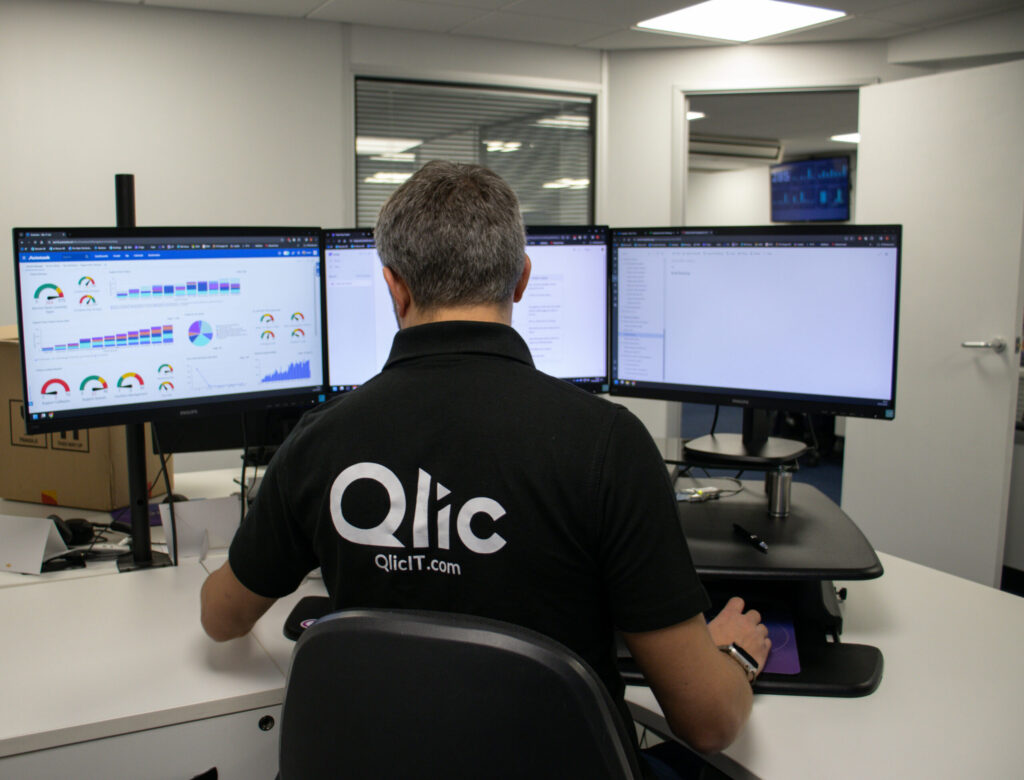
With technology constantly evolving and impacting every aspect of life, the education sector is no different. Digital learning environments have not only become the norm but are now a requirement. As schools and colleges strive to meet the increasing demands for remote access, hybrid classrooms, and real-time collaboration, the need for strong and user-friendly digital tools has never been greater.
At the heart of this transformation is a reliable IT infrastructure, which not only supports day-to-day operations but also encourages educators and students with the flexibility to teach and learn from anywhere. Solutions like Google for Education are directing the way, offering a suite of powerful tools designed to foster collaboration, streamline communication, and improve productivity.
In this blog, we’ll explore the key benefits of adopting Google Workspace for Education and how partnering with the right IT support provider can ensure a smooth and successful implementation tailored to the needs of your institution.
What Is Google Workspace for Education?
Google Workspace for Education is a suite of cloud-based productivity and collaboration tools developed by Google, purpose-built to meet the distinctive needs of educational institutions such as schools, colleges, and universities. Designed to enhance teaching, streamline administration, and support student engagement, this platform helps educators and learners work more efficiently, anytime, anywhere.
Being a cloud-based service means that all applications and data are hosted online rather than on local devices. This ensures that resources are available from any internet-connected device, making it easier for staff and students to access documents and collaborate in real time. These kinds of cloud solutions are specifically beneficial for educational environments that need to adapt quickly to hybrid and remote learning models.
Google Workspace for Education includes a variety of tools from Google Workspace (formerly G Suite), which you may already be familiar with and tailored to support different aspects of digital learning:
-
- Gmail – A professional email system for your school’s domain, allowing seamless communication between staff, students, and parents.
-
- Google Drive – Secure cloud storage where teachers and students can organise and access documents, assignments, lesson plans, and other learning materials.
-
- Google Docs, Sheets, and Slides – Online apps that allow students and educators to create, edit, and collaborate on text documents, spreadsheets, and presentations in real time.
-
- Google Classroom – A virtual learning environment designed to help teachers manage assignments, provide feedback, and communicate with students in an organised digital space.
-
- Google Meet – A video conferencing tool that supports remote teaching, virtual meetings, and parent-teacher conferences.
-
- Google Calendar – Enables shared calendars for managing class schedules, school events, and important academic deadlines.
-
- Google Forms – Ideal for creating quizzes, conducting surveys, and gathering information quickly and efficiently.
Together, these tools form a great ecosystem that improves and facilitates the teaching and learning experience while promoting efficiency across the institution.

Google Workspace for Education editions
To cater to the varied needs of educational institutions, Google offers several editions of Google Workspace for Education. Each version is designed with specific features and capabilities. This way, schools and colleges can choose the solution that best fits their size, budget, and digital learning goals. The main editions include Google Workspace for Education Fundamentals, Education Standard, and Education Plus, each offering increasingly more advanced tools and administrative controls.
-
- Education Fundamentals – The benefit of Google Workspace for Education fundamentals is that is free of charge and available to all qualifying institutions. It includes essential tools like Gmail, Drive, Docs, Classroom, and Meet, making it ideal for schools just beginning their digital transformation process.
-
- Education Standard – A paid upgrade that enhances the Fundamentals edition with advanced security features, analytics, and administrative tools. This version is well-suited for institutions looking to improve data protection and gain deeper insights into usage and activity.
-
- Education Plus – The most comprehensive edition, Education Plus includes everything in the previous tiers along with premium features such as advanced teaching and learning tools, additional Drive storage, more extensive Google Meet capabilities (including attendance tracking and breakout rooms), and personalised support from Google.
Each edition has an associated licensing structure, meaning institutions must assign the right license type to users based on the edition they’re subscribed to. For example, an Education Fundamentals license grants users’ access to all features and services available under that specific plan. Upgrades and add-ons can be purchased based on the school’s requirements, providing a scalable model that grows with your institution’s needs.
For a full comparison of features and pricing, visit the official Google for Education editions page.
The Benefits of Google Workspace for Education
Google Workspace for Education is more than just a set of productivity tools; it’s a comprehensive digital learning environment that encourages educators and students to connect, collaborate, and create with ease.
From fostering real-time teamwork to streamlining communication and improving IT management, the platform brings substantial advantages to schools of all sizes. Below, we explore the core benefits that make Google Workspace a trusted ally for both teachers and students.
Better Collaboration and Communication
Google Workspace dramatically improves interoperability and collaboration within schools. As A.J. Stich, founding principal of The Greater Dayton School, noted: “It allows me, as an administrator, to have real-time insights into our different academic programs and how student growth is looking day to day or moment to moment.” This kind of transparency and interconnectedness is made possible through the platform’s cloud-based infrastructure.
Cloud-based software enables continuous, real-time collaboration, teachers and students can work together on shared documents no matter where they are. Google Docs, Sheets, and Slides allow students to co-author reports, collaborate on group assignments, and contribute to shared lesson plans, all without the need to email files back and forth. Version history also helps teachers track progress and individual contributions.
Gmail and Google Meet support efficient and integrated communication among staff, students, and parents. Features such as video conferencing, screen sharing, in-meeting chat, and recording capabilities make it easy to host virtual lessons and staff meetings, while allowing students who miss class to catch up later. With the integration of Gemini, Google’s AI-powered assistant, users can further improve productivity by summarising meetings, drafting content, or pulling relevant resources quickly.
Easy IT Administration
Managing IT across a school or multi-academy trust can be a complex task, but Google for Education products are designed to be easy to deploy, manage, and use. With just a few clicks, IT administrators can configure new devices, enforce school-wide policies, and control access levels across the entire organisation.
The cloud-based console ensures that every user stays up to date automatically, lowering the need for manual updates or complex software installations.
Budget-Friendly
With multiple editions, Fundamentals, Standard, Teaching and Learning Upgrade, and Plus, Google Workspace for Education offers flexible solutions that match the scale and budget of any institution.
The free Education Fundamentalsedition provides access to robust tools at no cost, while the premium versions offer enhanced functionality for institutions that need advanced security and analytics features. The Education Plus edition, on the other hand, reduces the need to invest in other education technology.
In general, these options decrease the financial burden of investing in expensive software licenses or physical infrastructure, ultimately driving down long-term operational costs.
Security and Compliance
Security is a top priority in education, and Google provides a strong framework to ensure users’ data is always protected. All services use HTTPS-encrypted connections, so data transferred across the internet is shielded from unauthorised access. Features like two-factor authentication, encryption protocols, administrative controls, audit logs, and the Security Centre help institutions stay compliant with major data protection regulations such as GDPR and FERPA.
Whether using a mobile device or third-party email client, communications remain encrypted to protect privacy. Google also provides AI-powered security measures: more than 99.9% of spam, phishing attempts and malware are automatically blocked in Gmail.
Google Workspace for Education makes it really easy for schools to keep sensitive information, like student records, test scores, or financial data, from accidentally getting shared or falling into the wrong hands. It also provides built-in Data Loss Prevention (DLP) and data management features, which, combined with clear policies and user training, can significantly reduce the risk of data loss and ensure regulatory compliance.
Google’s commitment to transparency and control allows schools to confidently manage sensitive information across platforms. Students and faculty members can collaborate easily and securely across disciplines and campuses.
Better Scalability
Because it’s a cloud-based service, Google Workspace for Education allows your institution to scale smoothly. Whether onboarding a handful of new users or expanding to a new school site, there’s no need to purchase or install new hardware or software.
The platform’s flexible infrastructure and licensing options make it easy to scale up or down as your student population and technology needs evolve.
Accessibility and Inclusivity
Google Workspace is built with inclusivity in mind. Accessibility features such as screen readers, live captions, keyboard navigation, and recording tools ensure that students with diverse needs can fully participate in classroom activities. Additionally, the platform is available on a wide range of devices, from laptops to tablets to smartphones, enabling students to learn from anywhere, at any time, whether at home, in the classroom or while commuting.
Building Digital Skills
Equipping students and teachers with modern digital tools is vital for future success. By engaging with cloud-based platforms like Google Workspace from an early age, students gain valuable experience in collaboration, communication, and digital content creation, skills that are essential in today’s tech-driven job market. For educators, it’s an opportunity to upskill as well while transforming their lesson delivery and preparing learners for the real world.

Why Educational Institutions Need Expert IT Support for Google Workspace Initial Setup
While Google Workspace for Education offers a powerful suite of tools, the initial setup, migration from legacy systems, and ongoing management can present significant challenges for educational institutions, especially those without in-house technical expertise.
Configuring user accounts, managing permissions, migrating emails and data, and confirming compliance with safeguarding and data protection policies require careful planning and technical know-how.
This is where professional IT support becomes important. With the right support partner, schools and colleges can ensure a seamless transition to Google Workspace, avoiding disruptions to learning and administrative operations. Expert IT providers help configure the platform to meet the individual needs of your institution, whether you’re deploying for a small primary school or a multi-academy trust. They also deliver tailored training for staff, helping educators get up to speed instantly and use the tools to their full potential.
Ongoing technical assistance is equally important, ensuring that your systems remain secure, up to date, and optimised as your needs develop. From user management and device integration to troubleshooting and future upgrades, having a trusted IT partner can make all the difference.
At Qlic, we specialise in supporting educational institutions through every stage of their digital journey. Our team brings a deep understanding of both the education sector and cloud technology, ensuring that schools can fully realise the benefits of Google Workspace for Education, efficiently, securely, and with confidence.
Final Thoughts
Google Workspace for Education is transforming the way schools, colleges, and universities approach teaching, learning, and administration. Its comprehensive suite of cloud-based tools empowers educators to collaborate more effectively, engage students in dynamic ways, and streamline communication across the entire institution. With built-in security, scalability, and accessibility, it’s a forward-thinking solution tailored to the demands of modern education.
However, to truly unlock its full potential, expert guidance and support are vital.
GET IN TOUCH
Considering a move to Google Workspace for Education?




